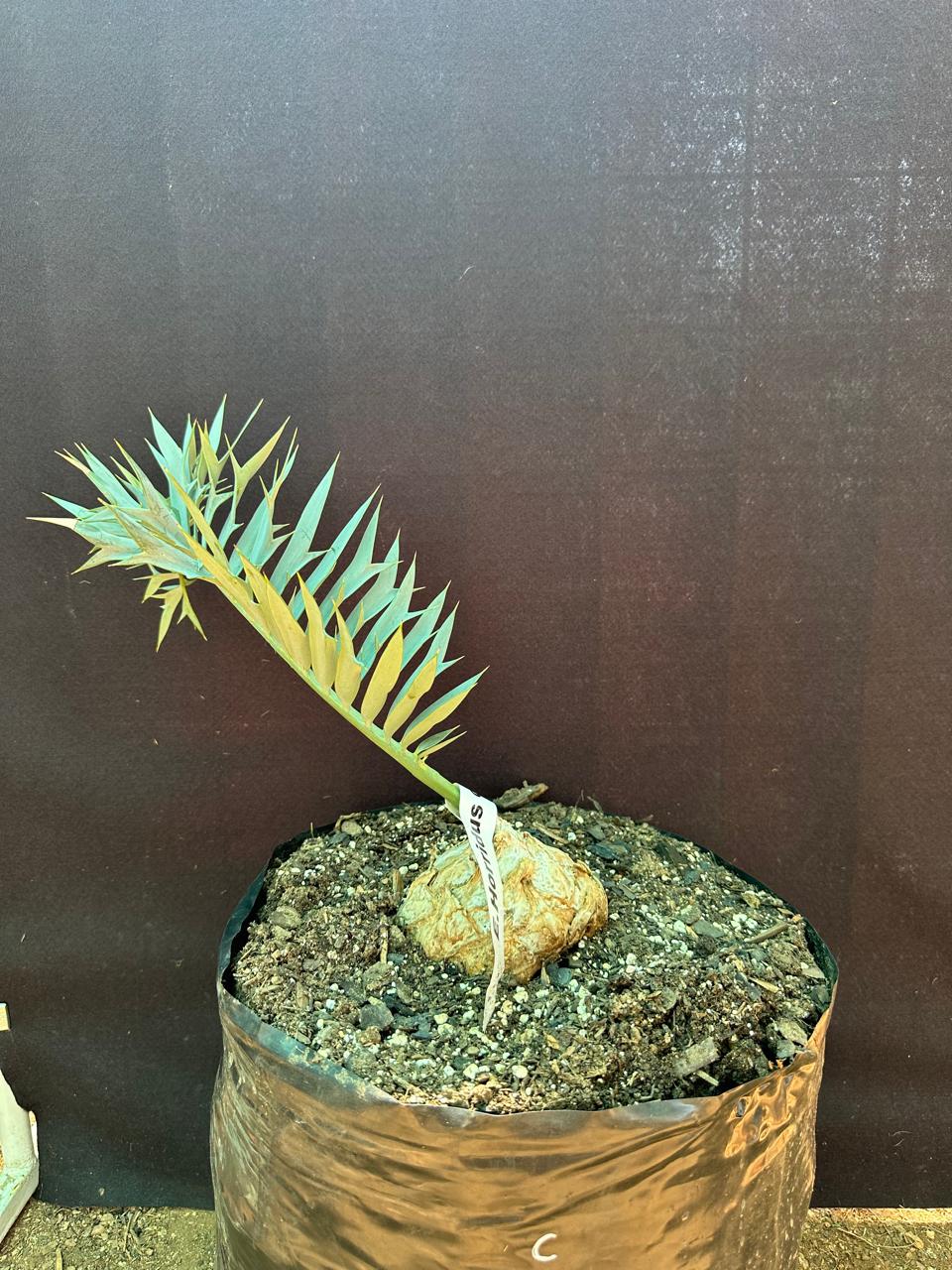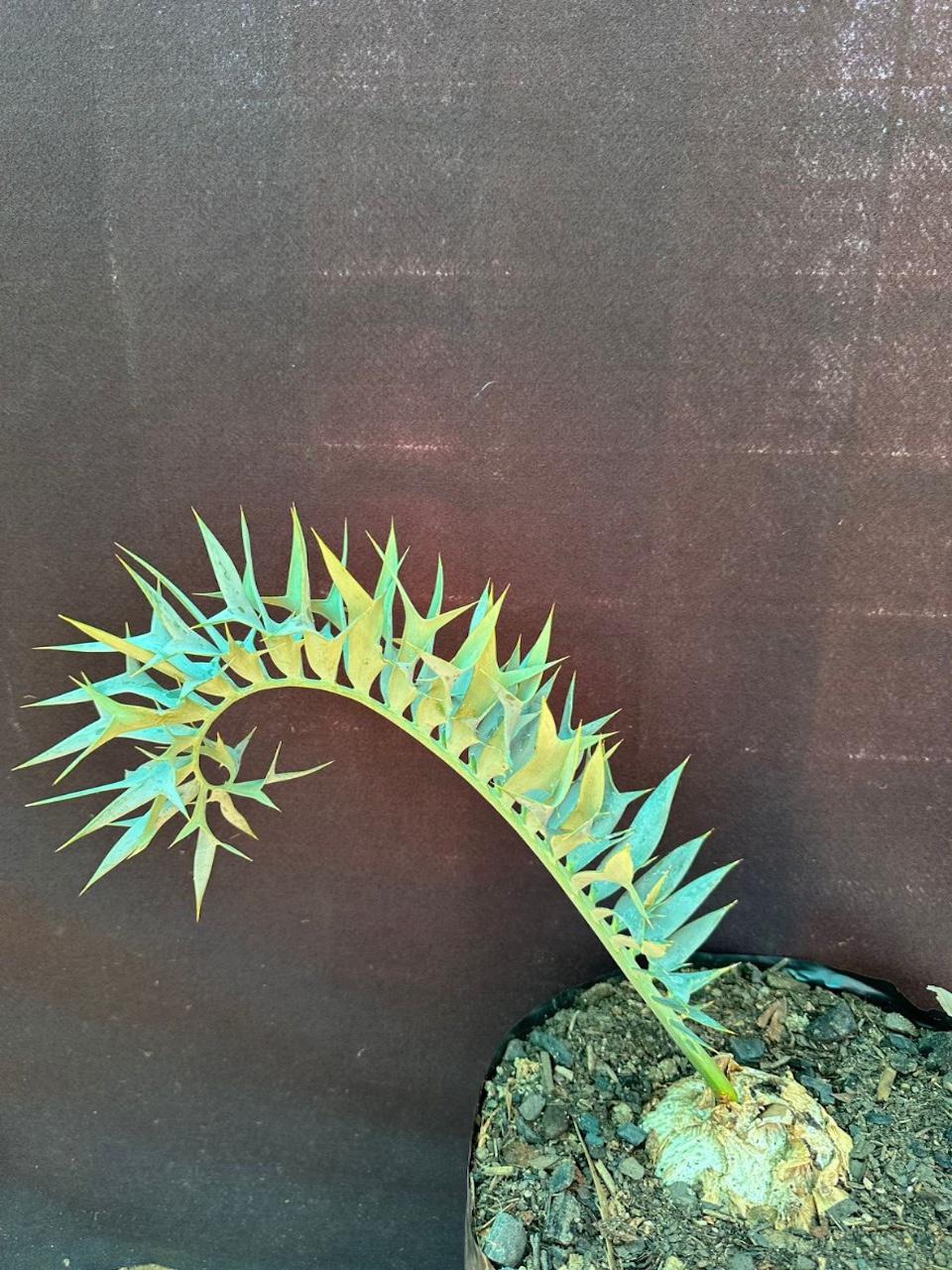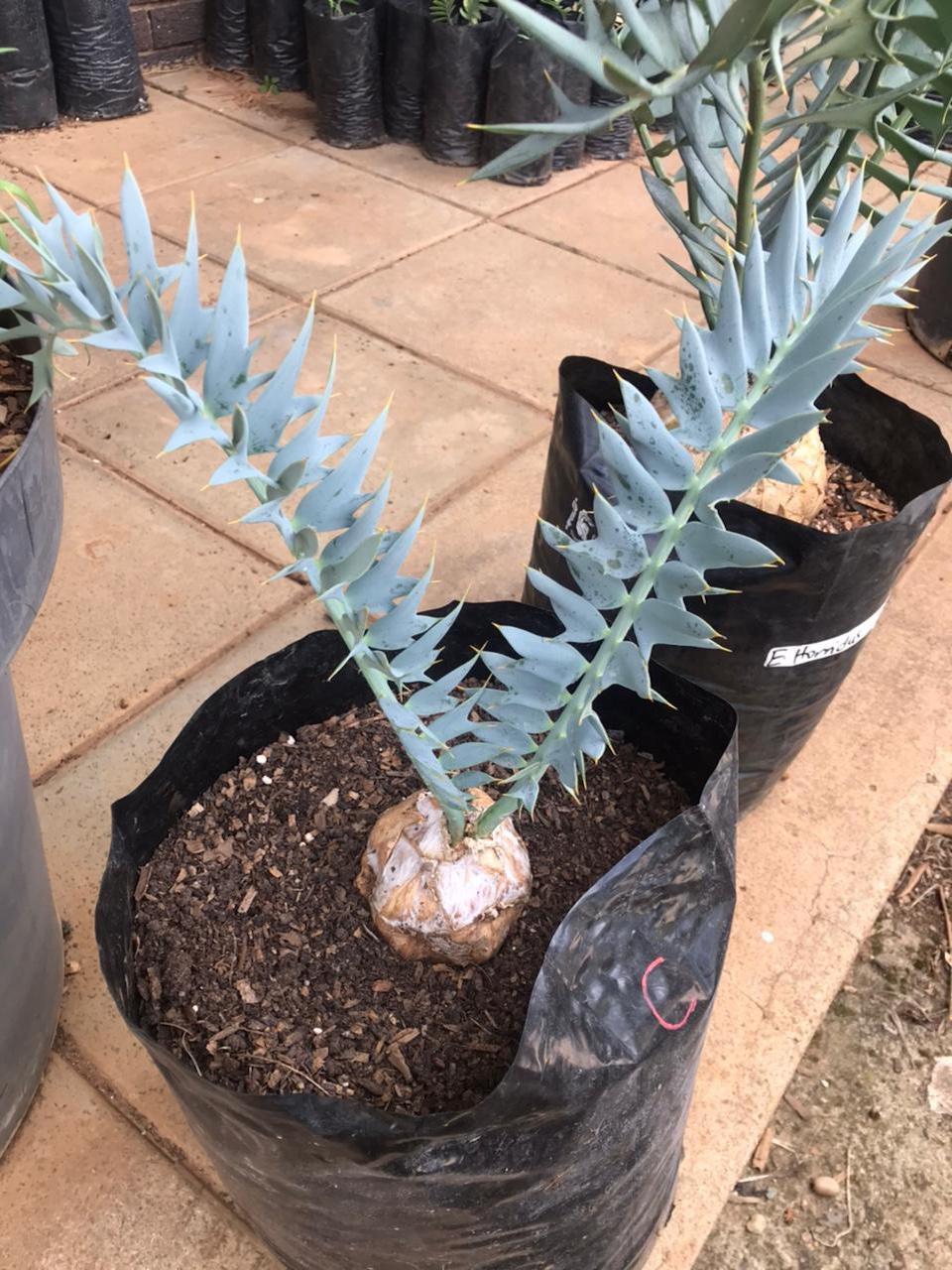


Encephalartos horridus
The Eastern Cape blue cycad (Encephalartos horridus) was first described in 1801 and is one of the most unique cycads due to its striking blue foliage and rigid, spiny leaflets. It grows in the Port Elizabeth and Uitenhage districts, thriving in open rocky ridges and karoo scrub environments with moderate rainfall.
Cones
Both sexes of E. horridus produce only one cone per crown, though occasional multiple cones have been observed. The immature cones are sparsely covered with dark bracts and black, scurfy hairs. Female cones are roughly oval, measuring 25-40 cm in length and 15-20 cm in diameter. The seeds are pale red to orange, and male cones are smaller and cylindrical. As the cones mature, they turn bluish-green, like the leaves, with male cones being more compact and shorter than the female cones.
Leaves
The leaves of E. horridus are up to 1 meter long and highly recurved, with the leaflets arranged in tight, spiny formations. The blue-silver leaves darken to a gray-green as they age, and new leaves appear in a "two-tone" pattern with lighter edges. The leaflets are rigid and leathery, curving back towards the rachis, with sharp, pointed lobes. Leaf color varies based on habitat, with more robust forms occurring in areas with deeper soils. The curling of the leaves adds to the plant's unique appearance.
Stems
E. horridus produces thick, compact stems that can reach heights of up to 80 cm in mature plants. These stems produce suckers freely from the base, often forming clumps with multiple stems. The surface of the stems is densely packed with hard, pointed bracts that protect the plant from herbivores and environmental stress. The stems blend into the surrounding rocky landscape, often making the plants difficult to spot from a distance. Over time, the stems develop a rough, gnarled texture.